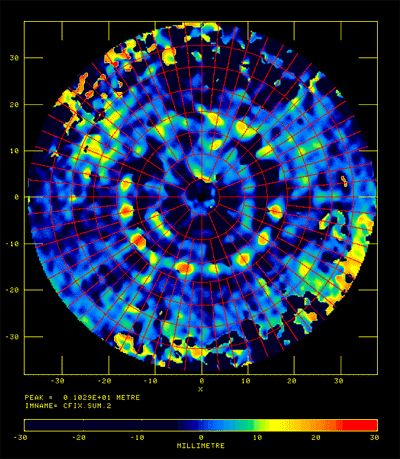High Precision Surface Adjustment
Using a modern holographic profiling technique it is possible to set each individual panel into an overall parabolic surface with far greater precision than was possible when setting the current surface. Thus, at the optimum elevation for which the surface is set, the overall accuracy is only a little less than that of the individual panels. As the telescope moves away from this elevation the overall precision will decrease due to gravitational deformations of the structure but will still remain good over a large fraction of the sky.
Whereas the present telescope can operate efficiently at wavelengths down to 18cm (A frequency of 1.8 GHz) the performance, as expected from the present surface accuracy, drops of dramatically at shorter wavelengths. The new surface will, in contrast, be almost fully efficient at a wavelength of 5cm (6 GHz) which is a major operating frequency of the MERLIN array and the surface is expected to give useable performance at even shorter wavelengths.



